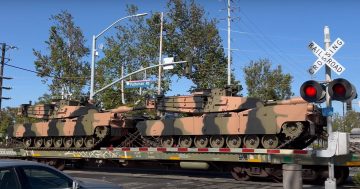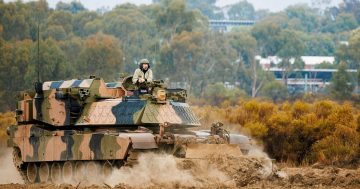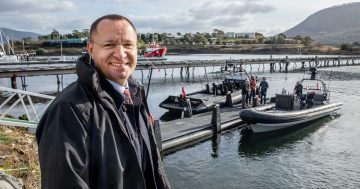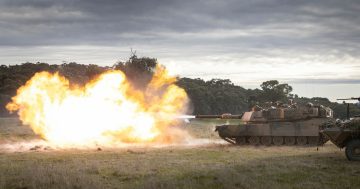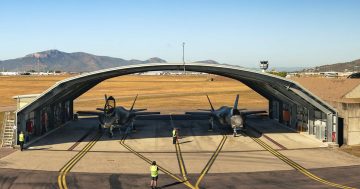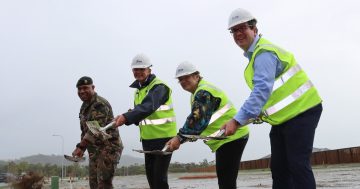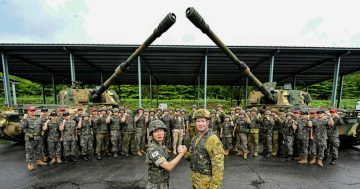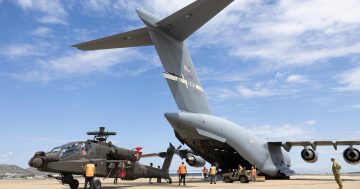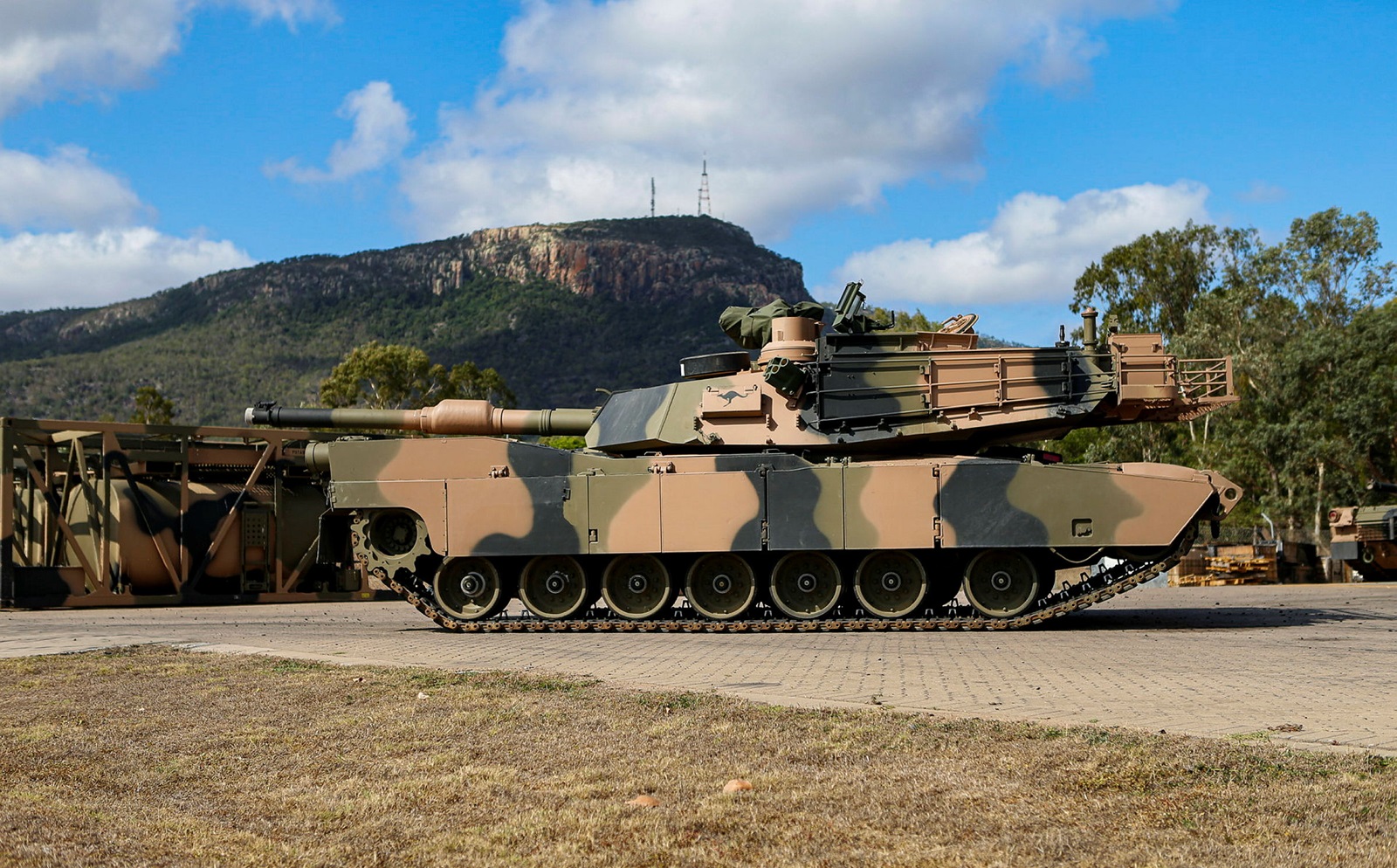
One of the Army’s first new M1A2SEPv3 tanks arrives at Lavarack Barracks in Townsville. Photo: ADF.
The first batch of new model Abrams tanks for the Australian Army have arrived at their new base at Lavarack Barracks in Townsville.
The new M1A2 Abrams System Enhancement Package version 3 (SEPv3) main battle tanks were acquired under Project LAND 907 to replace the older M1A1 tanks, 49 of which will be donated to Ukraine.
The first batch of 27 M1A2s for Australia were seen being loaded in California in July, and arrived in Australia in August, and have been working up at Puckapunyal near Seymour in Victoria.
The Abrams is built by General Dynamics Land Systems at the US Government-owned Joint Systems Manufacturing Center – also known as the Lima Army Tank Plant (LATP) – in Lima, Ohio.
While new tank hulls haven’t been built for a couple of decades, older M1A1s are instead remanufactured into the newer versions by adding new sensors, armaments and communications.
A total of 75 M1A2s are on order from the US to replace Australia’s 59 M1A1s.
Additional combat engineering vehicles including 29 M1150 Assault Breacher Vehicles, 17 M1074 Joint Assault Bridges, and six additional M88A2 recovery vehicles – all of which are based on the Abrams’ chassis and running gear – are also on order.
The first conversion course for the new tanks – including a live-fire exercise – was held in October and November, with 130 soldiers and officers from the School of Armour and Townsville’s 2nd Cavalry Regiment, 3rd Brigade learning to operate and maintain the new vehicles.
The majority of the new vehicles will be based at Townsville, while smaller numbers will be based at Puckapunyal and Wodonga.

A live-fire exercise of new M1A2s at Puckapunyal in Victoria. Photo: ADF.
The M1A2 differs from its predecessor in having a new digital fire control system, a remote weapons station with a .50 calibre machine gun and grenade launchers, advanced sensors and communications, and has provision for additional active and reactive armour.
“It’s a fantastic vehicle,” the School of Armour’s Lance Corporal Brock Lister said. “It’s easier to operate, easier to fire, the armour is enhanced and it’s more mobile than the M1A1.”
Crew commander Captain Anthony Holland who recently transferred from the UK’s Royal Armoured Corps said the inclusion of the commander’s independent thermal viewer meant his crew could now find and engage targets as quickly as they could reload.
“The M1A2 is the capability we need if we want to survive in the field,” he said.
The thermal sight operates independently of the main gun, allowing the commander to search for and designate targets for the turret to switch to between engagements.
Warrant Officer Class One (WO1) Bernie Maus said the M1A2’s enhancements were like going from Windows 98 to the latest operating system.
“After a short burst, crews can hit targets at 2500 metres every time,” he said.
“Everyone is pumped about the capability, especially with those new sensor targeting systems – it’s certainly going to allow the soldiers to up their game.”
A second squadron of 18 M1A2s is due to be stood up by the 2nd Cavalry Regiment in 2025, at which time the first batch of combat engineering vehicles are also scheduled to be delivered.


